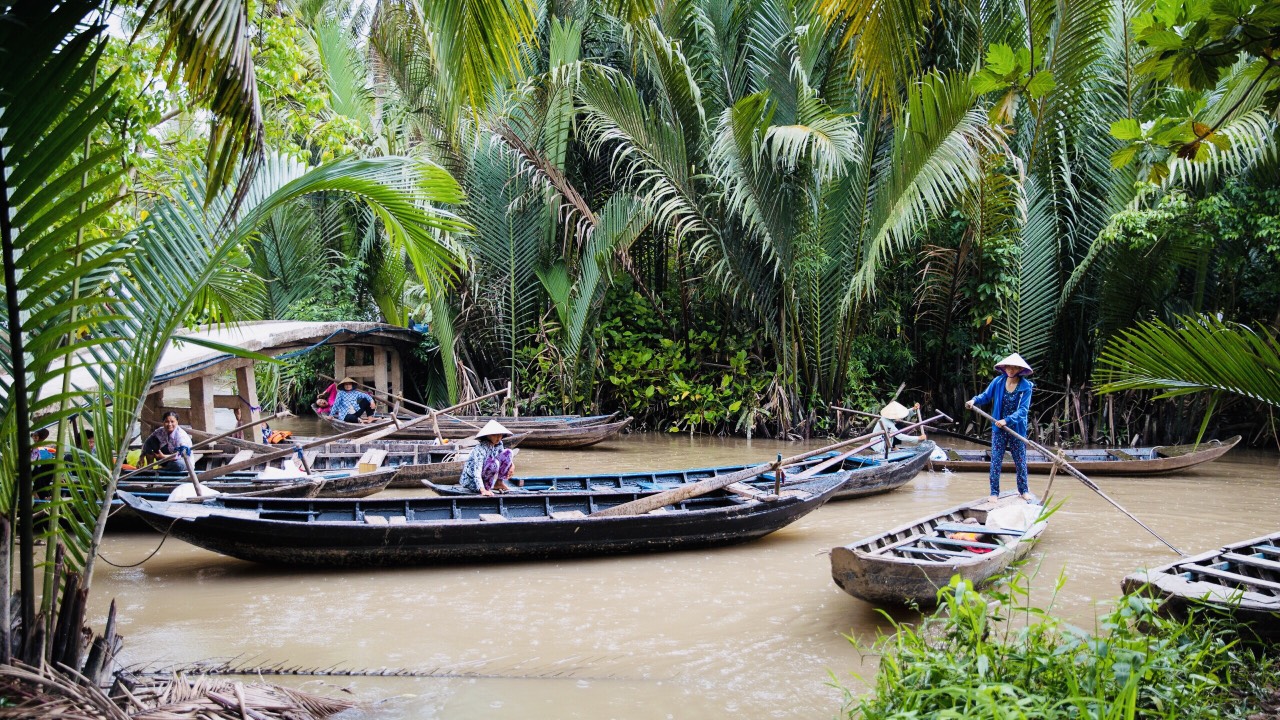
In the report on the results of the exploration, which was presented to the People’s Committee of Quang Binh province, Howard Limbert, head of the British speleological group, said that with such a size, “we believe it will be the largest cave in the world”.
Howard Limbert added that when penetrating deep into the cave, some parts of the cave were so vast that one could not even distinguish the walls.

Like the cave of Phong Nha, the new site, baptized Son Doong, has in its heart an underground river which curves it. Its vault, measured at its culminating point, exceeds 200 m in height, that is to say 4 or 5 times higher than that of the cave of Phong Nha.
These new measurements, carried out after having made sure of the safety conditions, indicate that the cave of Son Doong is longer of 2 km than that of Deer, which is in Malaysia, and until now considered as the largest of the world, posting a height of more than 100 m for a width of 90 m. Stretching over five kilometers, Son Doong is a natural wonder. It has its own microclimate, as well as its own jungle and river. It is wide enough to fit a Boeing 747 or an entire block of New York skyscrapers.

So, after 25 days of adventures, started since the end of March, the explorers, members of the UK Cave Studies Association, discovered the site in the rocky region west of Quang Binh, in the Phong Nha-Ke Bàng cave complex.

According to speleologists, it took them 8 hours of walking in the forest of Phong Nha-Ke Bàng National Park, covering 10 km from a section of the Ho Chi Minh trail crossing Quang Binh province, to finally find the entrance to the cave.
The access to the site of Son Doong is difficult, because it is in slope. The relief of the cave itself is quite uneven. The interior is distinguished by its kilometers of galleries and underground rivers, decorated with numerous stalagmites and stalactites

“The discovery of this new site will make the reputation of Phong Nha-Ke Bàng”, noted Howard Limbert, noting however that in the immediate future, because of the uneven relief and the torrent which borders it, the exploitation of this cave for tourist purposes is not recommended, because dangerous. Note that the cave of Son Dông was discovered for the first time in 2001, by chance, by a local inhabitant. But this last one had forgotten the way until he was used as guide for the British explorers.

The explorers identified a total of 20 caves in Phong Nha-Ke Bàng, with an accumulated length of nearly 36 km, bringing the number of cave sites in the area to 150. The Phong Nha cave system extends over a total length of 62 km, according to the new figure provided by the British explorers.

A tectonic ditch was discovered at 600 m from the Son Doong cave, also during this expedition. The speleologists tried to go down to 255 m of depth, but according to them, that did not constitute yet the bottom of the chasm, qualified of the deepest ditch of Vietnam.
You might also like:
















































